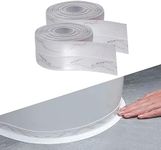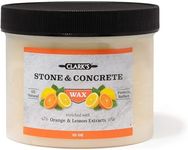Buying Guide for the Best Shower Caulks
Choosing the right shower caulk is important for keeping your bathroom clean, dry, and free from mold or mildew. Caulk is used to seal joints and gaps around your shower, preventing water from seeping into unwanted areas. The right caulk will ensure a long-lasting, watertight seal and make maintenance easier. When picking a shower caulk, it's important to understand the different types and features so you can select the best one for your needs.Type of CaulkThe type of caulk refers to the material it is made from, such as silicone, latex, or a blend. This is important because different materials have different properties like flexibility, durability, and resistance to water and mold. Silicone caulk is highly water-resistant and flexible, making it ideal for showers, while latex caulk is easier to clean up and paint over but may not last as long in wet areas. For most shower applications, 100% silicone or a specialized bathroom caulk is recommended. If you need to paint over the caulk or want easier cleanup, a latex or siliconized latex caulk might be suitable, but always check if it is labeled for bathroom or wet area use.
Mold and Mildew ResistanceMold and mildew resistance means the caulk has additives that help prevent the growth of mold and mildew, which are common in damp environments like showers. This is important for keeping your bathroom looking clean and for reducing health risks. Caulks labeled as 'mildew-resistant' or 'mold-resistant' are best for showers. If your bathroom is poorly ventilated or you have had mold issues before, prioritize this feature to keep maintenance low and hygiene high.
Curing TimeCuring time is how long the caulk takes to fully set and become waterproof after application. This is important because using the shower before the caulk is cured can ruin the seal. Curing times can range from a few hours to several days. If you need to use your shower soon after caulking, look for a fast-curing product. If you can wait longer, standard curing times are fine. Always follow the manufacturer's instructions for best results.
Flexibility and AdhesionFlexibility and adhesion refer to how well the caulk can stretch and stick to surfaces as they expand and contract with temperature changes and use. This is important in showers because surfaces like tiles and tubs can move slightly, and a flexible caulk will prevent cracks and leaks. Silicone caulks are generally the most flexible and have strong adhesion, making them a good choice for areas that experience movement. If your shower has joints that move or if you live in an area with temperature swings, prioritize flexibility.
Color and FinishColor and finish refer to the appearance of the caulk once it is dry. This is important for matching the caulk to your tiles or fixtures and for achieving the look you want. Caulks come in clear, white, and sometimes other colors. Clear caulk blends in with most surfaces, while white is classic for most bathrooms. Choose a color that matches or complements your shower area. If appearance is important to you, check the finish (matte or glossy) as well.
Ease of ApplicationEase of application means how simple it is to apply the caulk smoothly and cleanly. Some caulks are easier to work with, especially for beginners, and may come in squeeze tubes or cartridges for caulking guns. If you are new to caulking, look for products labeled as easy to apply or with smooth application features. If you have experience or need to cover a large area, a cartridge for a caulking gun may be more efficient.














